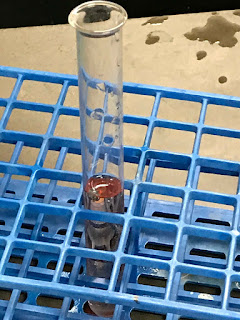here is my drawing of an unknown alien and my table. I arranged this in terms of number of fingers. This is similar to the Medeleev and Moseley table because the rest of the class will have different orders. Other groups may arrange this by things like hair, or body, which was similar to how they arranged the periodic table before there was a universal way to find atomic number, or atomic mass, and before there was a universal periodic table, the first introduced by Medeleev. This is very similar to Mendeleev because there is an unknown box that was left, just like in this table. Because there is a blank in the table, it allowed Mendeleev to know there are unknown elements, while there were boxes for elements that were known like Gold, or Silver. This project explains how hard it was to do experiments before there was a universal table or way to find atomic number.
Mendealien Analysis
1. In what two ways are all the species different?
All the species are different in ways like body type, hair, number of fingers, and design on their chest.
2. What do the species in a row have in common?
On the secret agent guys PDF, the rows all have very similar body types. similar to the periodic table, certain elements close to each other like metals, nonmetals and noble gases will have very similar body types.
3. What do the species in a column have in common?
On the secret agent guys PDF, the columns all have diverse types of bodies. Every row down gets bigger, similar to the periodic table. For example, for the noble gases, they will each get bigger in terms of protons, similar to this alien chart.
4. How do the numbers of fingers relate to the periodic table?
On the secret agent guys PDF, the number of fingers goes up one per each box. The number of fingers are like the atomic number. It has specific orbitals, like the S or P. Once it reaches a certain amount, it needs another orbital.
5. How do the arms relate to the periodic table?
On the secret agent guys PDF, one arm is like the s orbital, once it reaches 2 fingers, it needs another arm. Once the next arm reaches 8 it needs another arm, just like the P orbital. Then, once the next arm reaches 8, it needs another arm.
6. How do the number of hairs relate to the periodic table?
On the secret agent guys PDF, the number of hairs is somewhat random. It starts with one, then two, then one, then two and then goes up from there. However, certain mendaliens have only one hair, rather than going up one in a sequence.
7. How do the markings on the chest identify the agents compared to the periodic table?
On the secret agent guys PDF, similar to the hair is somewhat random. It will go in a certain order, like the small chested aliens will have dots or arrows, however some small chested aliens also have plaid designs. In my opinion, there is no set design, purely random.





















